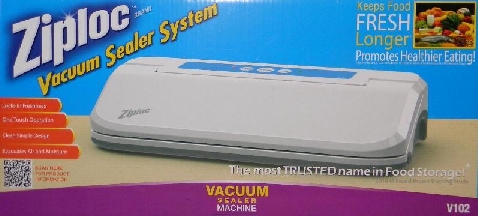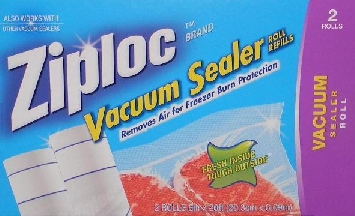

































 If you do not already own a food vacuum sealer then I suggest that you consider the "Ziploc" Vacuum Food Sealer (about $50 at Walmart). I also recommend the "Ziploc" brand vacuum seal bags.
If you do not already own a food vacuum sealer then I suggest that you consider the "Ziploc" Vacuum Food Sealer (about $50 at Walmart). I also recommend the "Ziploc" brand vacuum seal bags. |
 |
| Bags: 1 Gallon Each | Rolls: 8 Inches Wide and 20 Feet Long |

